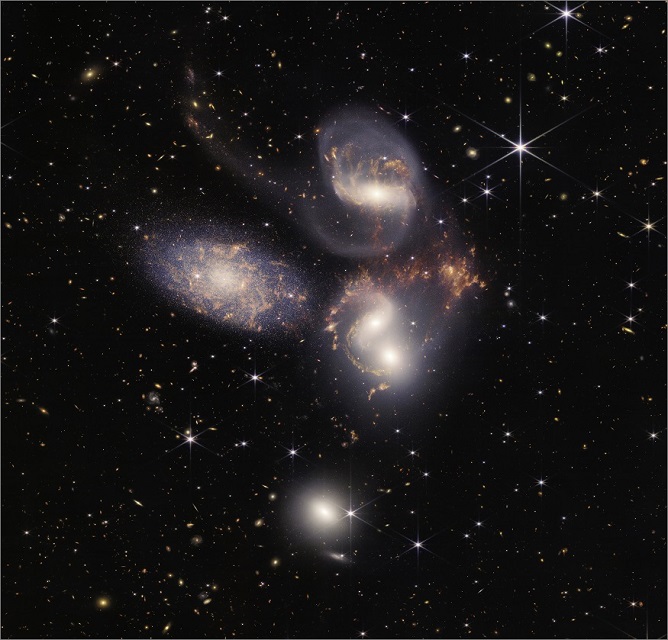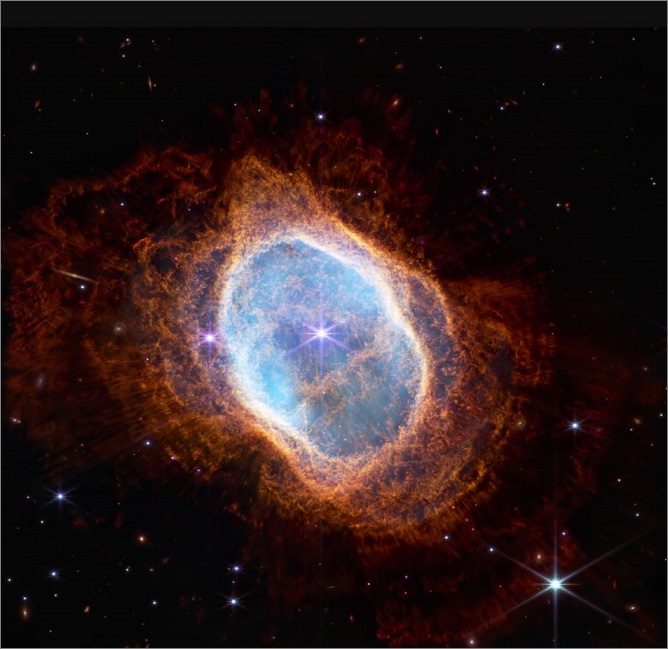NASA this week released the first set of spectacular images taken by its James Webb Space Telescope (JWST), providing the highest ever resolution view of our early universe.
On Tuesday, US President Joe Biden had the honour of unveiling the first picture: a deep field image of galaxy cluster SMACS 0723.
“Today is an historic day,” Biden said. “Six and a half months ago, a rocket launched from Earth carrying the world’s newest, most powerful deep space telescope on a journey one million miles into the cosmos – that blows my mind, one million miles!
“On the way, unfolding itself deploying a mirror 21 feet wide, a sunshield the size of a tennis court, and 250k tiny shutters each one smaller than a grain of sand.
“Put together it’s a new window into the history of our universe.”
The deep field image shows a startling array of different coloured galaxies, each filled with thousands of stars that create beautiful complex structures, the detail of which is on full display.
Because of how much mass the galaxy cluster contains, the first JWST image includes a serious of gravitational lensing – the visible effects of light bending where high mass objects create curves in spacetime.

JWST’s first deep field of the SMACS 0723 galaxy cluster. Image: NASA
Even with all these massive intergalactic objects, the image only shows a “a tiny sliver of the vast universe”, as per NASA’s description, since it is “approximately the size of a grain of sand held at arm’s length”.
Light from the galaxy cluster travelled billion years before arriving at the JWST’s finely tuned sensors and provides a look at the universe in its early stages.

Stephan’s Quintet of galaxies. Image: NASA
Karl Glazebrook, a Distinguished Professor at Swinburne University’s Centre for Astrophysics and Supercomputing, said the telescope’s main purpose is to look back in time and “witness the birth of the first stars and galaxies in the early Universe”.
“The first billion years of cosmic history have barely been explored,” he said.
“All current star formation we can observe, such as in the Milky Way, is from enriched interstellar gas.
“We haven’t yet seen how stars form in pristine gas, which is without any heavy elements – as such a state hasn’t existed for more than 13 billion years.”
On Wednesday, NASA published more stunning images from the JWST including a group of galaxies known as ‘Stephan’s Quintet’, a stellar nursery in the Carina Nebula, and the dramatic cloud of debris from a dying star in the Southern Ring Nebula.

The Southern Ring nebula. Image: NASA
Each of the phenomena has previously been captured by the Hubble Telescope – which has been in operation since 1990 – but a comparison with the pictures from JWST show just how much of an upgrade the new hardware is.
This website uses a simple slider to demonstrate how our view of the universe has changed as the technology has improved.










